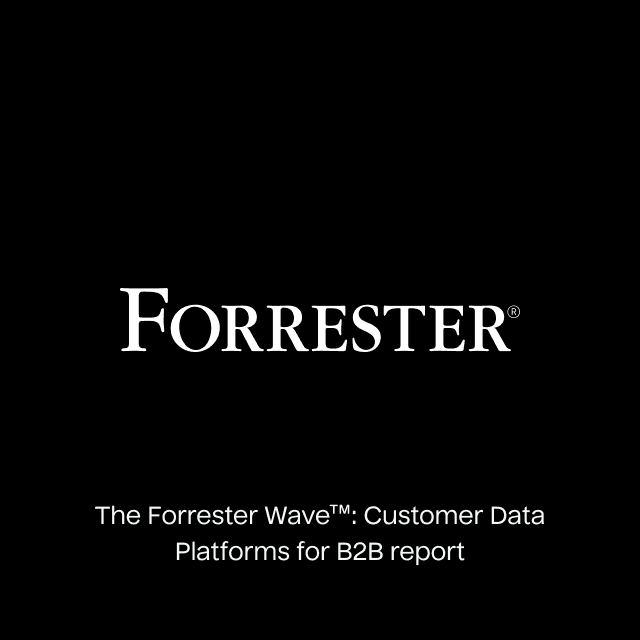Big news!: Hightouch was just recognized as a Cool Vendor in 2022 Gartner Cool Vendors in Marketing Data & Analytics 🙌

Being only in our second-year of enterprise go-to-market (🤯), we feel so amazed and humbled to receive this recognition from an industry powerhouse like Gartner. We feel this early and outsized recognition is testament to the seismic shift that Reverse ETL and Data Activation are having on the modern data stack, and it’s all because of our innovative customers who are pushing the limits on how data is used in their organizations.
In our view, this recognition is further validation for the momentum we’ve seen among our enterprise customers. Cloud data warehouses are rapidly modernizing enterprise data architectures and strategies. In turn, data teams are leveraging Reverse ETL to get more mileage out of their modern data stack investments to help business teams take action in a streamlined and automated way.
Don’t just take my word for it—here are a few of the recent enterprise customers using Hightouch for Data Activation: GameStop, the NBA, SoundCloud, Spotify, Warner Music Group, and others from the Fortune 500. And the momentum is only accelerating. ❤️

Recent Hightouch Enterprise Wins
Cool Vendor in Marketing Data and Analytics
To be defined as a Cool Vendor by Gartner, a company must be considered innovative or transformative for products, services, or initiatives. The criteria by which a vendor is defined as “cool” are:
- Innovative: the vendor has developed technologies/products that enable users to do things they couldn’t do before
- Impactful: the vendor offers technologies/products that have or will have business impact; it’s not just “technology for the sake of technology”
- Intriguing: the vendor has caught Gartner’s interest/curiosity during the past 12 months
Disrupting the Multi-Billion Dollar CDP Industry
According to Gartner’s 2021 Digital Marketing Survey, 63% of respondents agreed that “leveraging integrated customer data to drive digital marketing execution presented a moderate or significant challenge.1 This is despite the fact that customer data platforms (CDPs) are already widely adopted by marketers, which shows that significant gaps remain between managing data and putting it to work operationally.”
Organizations have made significant data warehousing and BI investments, and Hightouch helps unlock the value of those investments across the business. By making modeled customer data easily accessible to marketing, sales, operations, and success teams, business users can get a complete 360 view of the customer in their own natural habitat—whether that be Hubspot, Salesforce, Slack, or Zendesk—to personalize customer outreach, streamline workflows, and drive revenue.
The best part: by leveraging the data warehouse and Hightouch, teams can start realizing this value in minutes (not months required by a typical CDP implementation). According to Gartner, “marketing technology leaders report using 2.9 vendors for CDPs on average — those wary of overinvestment in CDPs, or wary of the feature overlap this results in, may also find Reverse ETL as a potential avenue to reduce costs and increase technology utilization”.2
The Warehouse as the Source of Truth
At Hightouch, we’ve been pretty vocal (understatement? 😆) about where we think the CDP market is going, and the fact that many organizations are bogged down by CDPs that have taken far-too-long to stand up (and have yet to realize meaningful value from). Many are now catching on to the fact that the warehouse already houses relevant customer data, and through the power of Reverse ETL along with a no-code audience builder, Hightouch helps technical and non-technical teams alike turn that data into immediate value across the business.
Thank You
We are indebted to our customers, partners, and the broader data community for embracing Data Activation and trusting Hightouch as the last mile of your modern data stack. We hope our status as Cool Vendor validates the work you do to help teams take action on data and we’re excited for the journey ahead. If you’re a Gartner customer, you can read the full report here.
Gartner Disclaimer
GARTNER, COOL VENDORS and the Gartner Cool Vendor badge are the registered trademarks of Gartner Inc., and/or its affiliates and have been used herein with permission. All rights reserved. Gartner does not endorse any vendor, product or service depicted in its research publications, and does not advise technology users to select only those vendors with the highest ratings or other designation. Gartner research publications consist of the opinions of Gartner’s research organization and should not be construed as statements of fact. Gartner disclaims all warranties, expressed or implied, with respect to this research, including any warranties of merchantability or fitness for a particular purpose.
Footnotes
-
Gartner’s 2021 Digital Marketing Survey. The purpose of this survey is to understand current and future digital marketing strategies, including where responsibilities lie, current and anticipated challenges and responsibilities and how these were affected by disruptive events. It also explores where marketers’ channel-specific investments and initiatives are directed today and what techniques marketers are using to support an effective cross-channel and multichannel digital marketing strategy. This study was conducted online during November 2020 through December 2020 among 350 respondents from the U.S. (31%), Canada (10%), the U.K. (30%), Germany (14%), and France (14%). Ninety percent of respondents came from organizations with $1 billion or more in annual revenue. The respondents came from a variety of industries: financial services (40), high tech (39), manufacturing (41), consumer products (41), media (42), retail (39), healthcare providers (42), IT and business services (26), and travel and hospitality (40). Respondents were required to hold a leadership position in decisions related to digital marketing strategy. The survey was developed collaboratively by a team of Gartner analysts who follow marketing and was reviewed, tested and administered by Gartner’s Research Data, Analytics and Tools team.
Disclaimer: Results of this study do not represent global findings or the market as a whole but reflect sentiment of the respondents and companies surveyed.
-
2022 Gartner Marketing and Communications Technology Survey. The purpose of this survey was to investigate the state of technology acquisition, adoption and use, including best practices for managing the technology stack, specific technologies in use, and the degree of their adoption. The research was conducted online from May through early June 2022 among 422 respondents, with 228 in North America (U.S. and Canada),159 in Western Europe (U.K., Germany and France), and 35 in the Nordic region (Denmark, Norway and Sweden). Respondents were required to be senior decision makers, where the majority of their daily responsibilities are mostly aligned with either business- or IT- focused marketing (n = 324) or business- or IT-focused communications (n = 98). Seventy-eight percent of the respondents came from organizations with $1 billion or more in annual revenue. The respondents came from a variety of industries: financial services (n = 57), tech products (n = 37), manufacturing (n = 49), consumer products (n = 50), media (n = 40), retail (n = 56), healthcare (n = 52), IT and business services (n = 32), and travel and hospitality (n = 49). This research focuses on the 324 respondents aligned with marketing. Fifty-six percent of marketing respondents reported directly in the marketing function, and the remainder reported in the marketing and communications; marketing communications; brand management; customer experience; or product marketing and management function. Sixty-five percent of these respondents were solely responsible for taking decisions related to marketing technology, while the rest were either a leader of or an advisor to the group responsible for making decisions on marketing technology.
Disclaimer: Results of this survey do not represent global findings or the market as a whole, but reflect the sentiments of the respondents and companies surveyed.















